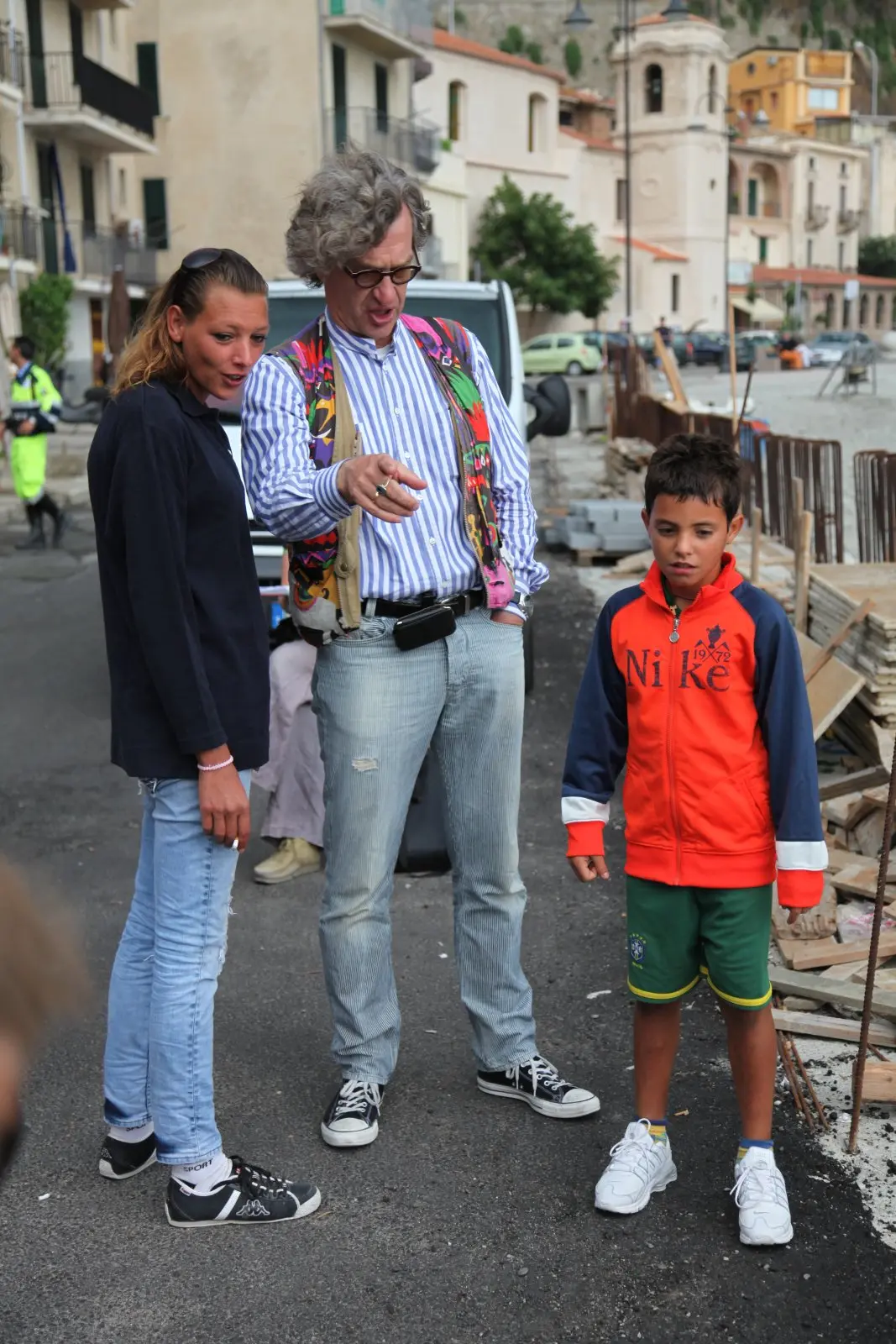

“I saw a town open its doors to resolve not so much the problem of refugees, but a problem of its own: how to continue to exist and not from depopulation and immigration. And I wanted to tell this story in a film featuring the real-life protagonists”.
Wim Wenders, Berlin, 11 November 2009
The documentary, which is 32 minutes long and filmed in 3D, draws our attention to the theme of integration and tells the true story of the integration of a community of migrants who repopulated some of the municipalities in Calabria that were rapidly emptying.
We start in Badolato, of which we see some of the town’s winding streets and the sea. Here Peppino is the last child left and has no one to play ball with. Until, that is, an old wreck washes ashore, with refugees, including children, from Africa aboard. The child and the mayor try to convince the prefect that the town has the facilities to take them in: finally Peppino has someone to play with. The actors on board the boat are real-life refugees from different parts of Africa who have settled in Riace, in a community that has seized the opportunity to avoid irreversible depopulation.
When a young eight-year-old actor, the son of Afghani political refugees who plays the part of a child from the outside, invites Wenders to Riace, the originally fictional film turns into a real-life tale. The director uses images to portray the poetry of Riace’s deserted roads, films the immigrants, and listens, almost incredulously from behind the camera, to the stories people tell him, stories about an abandoned town filled with new life by its new arrivals.
“I saw a town open its doors to resolve not so much the problem of refugees, but a problem of its own: how to continue to exist and not from depopulation and immigration. And I wanted to tell this story in a film featuring the real-life protagonists”.
Wim Wenders, Berlin, 11 November 2009
The documentary, which is 32 minutes long and filmed in 3D, draws our attention to the theme of integration and tells the true story of the integration of a community of migrants who repopulated some of the municipalities in Calabria that were rapidly emptying.
We start in Badolato, of which we see some of the town’s winding streets and the sea. Here Peppino is the last child left and has no one to play ball with. Until, that is, an old wreck washes ashore, with refugees, including children, from Africa aboard. The child and the mayor try to convince the prefect that the town has the facilities to take them in: finally Peppino has someone to play with. The actors on board the boat are real-life refugees from different parts of Africa who have settled in Riace, in a community that has seized the opportunity to avoid irreversible depopulation.
When a young eight-year-old actor, the son of Afghani political refugees who plays the part of a child from the outside, invites Wenders to Riace, the originally fictional film turns into a real-life tale. The director uses images to portray the poetry of Riace’s deserted roads, films the immigrants, and listens, almost incredulously from behind the camera, to the stories people tell him, stories about an abandoned town filled with new life by its new arrivals.

A journey into the heart of the Calabria that opened its homes to refugees from all over the world.